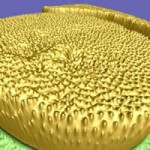The Vancouver-based rapper, Baba Brinkman, who sometimes raps about science is currently trying to crowdsource funding for an enhanced DVD of his Rap Guide to Evolution. Here’s a rough video of the rap from Brinkman’s visit to the Centre for Systems Biology, University of Birmingham, England,
I have a much posher video version of one of Brinkman’s evolution raps in my Aug. 4,2010 posting about him.
Pasco Phronesis (David Bruggeman) has been campaigning for Brinkman’s project (from his Jan. 7, 2011 posting),
The DVD is being produced, and the videos for the songs (which you can hear online for free, and download for naming your price) have been filmed. The Crowdfunder drive is to get 10,000 pounds to make the DVD better. As Baba describes it:
“The additional funding from Crowdfunder will allow us to produce original animation and digital effects and license high-quality nature footage from the BBC, to make the vision of each video really come to life.
If you donate 10 pounds (roughly $15.55 with today’s conversion in USD), you get a digital download of the DVD.
If you want a physical copy, that’s 20 pounds.
If you want your face in the DVD (as part of the digital animation the crowd money will cover), that’s 30 pounds.
If you’ve got a thousand pounds and enough to cover Brinkman’s travel, he’ll come perform for you sometime this year, depending on his schedule. Those of us without deep pockets will have to wait and see if his off-Broadway production of Rap Guide to Evolution takes flight.
The songs are peer reviewed, and with no slight to most of the science music I’ve promoted here, it’s Brinkman, They Might Be Giants, and the stuff Tom McFadden from Stanford has been involved with. Everyone else is too far back to eat their dust. (Bill Nye, of course, is in the hall of fame and not currently active)
The music is good, Brinkman is a compelling performer, and the science is sound. If you’re still stuck on a thirty pound donation, think about it as getting a high-quality DVD and donating to help science education. Because that’s what you’ll be doing. And if you’re looking for a little red meat in all of this, Brinkman has it for you (posted December 13):
“On Friday we filmed an epic breakdance battle with Darwin facing down his intellectual rivals, Michel Foucault (representing social constructivism), Sarah Palin (representing the christian right), and God (representing Himself, of course). It was a satirical reconstruction of the evolutionary culture wars on the dancefloor and Darwin reigned supreme!”
If you are so moved, you can go here to help fund the project.
